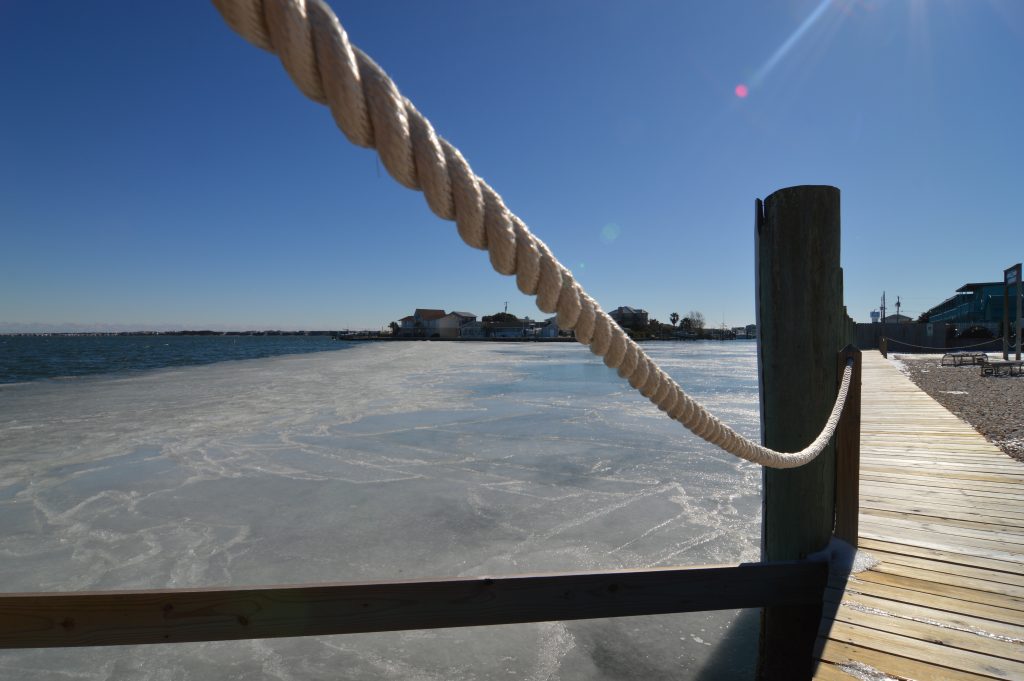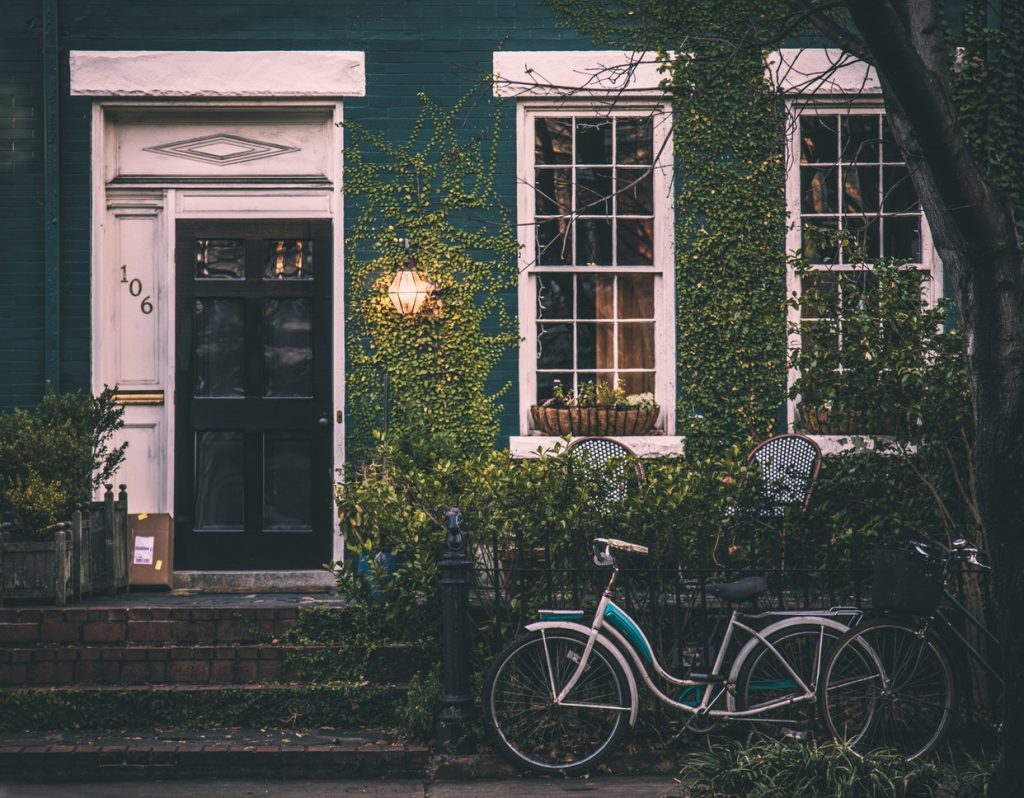
Home Buying Myths
So you may be thinking about buying a home, and if this is your first rodeo, then you probably have a ton of people giving you advice and tips on how to go about the home buying process. There are many myths in relation to home-buying that you should be aware of, because after all, this is one of the biggest decisions that you will ever make.
The first myth I would like to tackle is, “You do not need a real estate agent.”
Well you certainly can do it on your own, but why would you when you can hire a professional? It is similar to driving a car without ever taking a driver’s education course. You’ve heard about it and it seems easy enough, but you don’t really know what you are doing. When making such a huge life decision, it is very important to have someone beside you to hold your hand and help make sure that you make the best decision possible. Often times, real estate agents have knowledge and access to listings that may not be public knowledge. Realtors are also experienced in negotiating so that they can get the best deal for the home-buyer- and this quality alone can make it worth it to hire a real estate agent to assist you in the process. A buyer’s agent can also help lead you away from a property that has problems that could potentially turn into disasters. Finally, there is a lot of paperwork and there are a lot of laws that are necessary to know when buying a home, so it usually is best to sit back and let your real estate agent use his or her expertise to find you the perfect home.
The next myth that we will discuss is that, “You must put down a 20% down payment.”
You have options. You do not have to put down 20%. It does help to put down a 20% down payment because it will lower your payments every month, as well as your interest rate costs. In fact the average down payment percentage for Americans is closer to 13%, according to a report made by BMO Harris. In fact, your down payment can actually be as low as 3%, according to Fannie Mae. This statistic alone busts the myth. It is important to talk to your real estate agent, if you have one, and speak with your lender to explore all of your down payment options.
Moving on to myth number three, most people believe that “You should only ever choose a 30-year fixed mortgage.”
You may be surprised to hear this but a 30-year fixed mortgage is not your only option. It certainly is the most traditional option but it is not the only one. Shorter life mortgages may have higher payments but they usually have must lower interest rates. This decision should be explored and discussed with an experienced banker or a financial advisor to help the home buyer decided what option is best for him or her.
Myth #4, “All you need is a down payment.”
It would be cool if this myth were true, but unfortunately it is not. There are many other costs that are associated with buying a home that a lot of first time home-buyers have not been warned about. There are often times closing costs, lawyer fees, appraisals and inspections which then sometimes lead to repair costs, and home owners insurance amongst many other things. It is always good to be prepared for these sort of things to come up. Although many of these costs may seem like an inconvenience, they often times will protect you from damages and larger costs in the future.
The fifth myth – “A home inspection is not necessary.”
A home inspection is usually optional but it is very necessary. It may hold up the buying process and can be considered expensive but in the long run it can save you from a lot of pain, misery, and financial loss. Even if a home is brand new, it may have problems that you cannot see. A home inspection is a great weapon to use when it comes to negotiating a price on a home. You may spend up to $400.00 on a home inspection but it could be the difference in negotiating thousands of dollars to come off of the asking price.
These are just a few often myths that most first time home-buyers believe to be true. Our advice to you would be to do your research. This is one of the biggest financial decisions that you will ever make and it is so crucial to really know what you are doing or to hire someone who does so that you can rest easy at night (in your new home) knowing that you made the right decision.
Tips for Winterizing Your Home

It has been a frigid winter here on the east coast, and we have officially seen snow. If you didn’t want to believe that winter was coming and you decided not to winterize your home, you may be experiencing some regrets as the temperatures have dropped below freezing. You may also be asking yourself, what does it mean to winterize your home and why should you do it. You should prepare your home for cold weather for many reasons. A few of these reasons include frozen or busted pipes, fire prevention, energy efficiency, carbon monoxide poisoning, and of course, to save money. Protect your home, your family and your bank account this winter by following these helpful tips to prevent winter nightmares.
1. Be Sure to Clean Your Gutters
• Water and snow can build up in your gutters causing ice dams to formulate. It is important to keep your gutters clean allowing a free flow which will protect your roof from potential damage or even collapsing.
2. Protect Your Pipes
• If your pipes freeze, they have the potential to crack or burst. This can lead to catastrophic damages such as flooding that often time causes severe damage to the structure of a home as well as it creates a potential for mold. As you can see, frozen pipes can not only be a headache, but a pure financial disaster. As many people are previously aware, allowing your faucet to drip continuously is a great method of prevention. It is also wise to insulate your pipes, or to wrap them in heat tape or heat cables. You should also make sure that the area around your pipes is completely sealed and insulated. Lastly, leaving your cabinet doors open allows the heat from inside your home to keep your pipes warm.
• In the unfortunate case that your pipes are already frozen, you can follow some of these tips to thaw them out. If you turn on your faucet and nothing comes out, you should leave the faucets on and call a plumber. If you would like to try your best efforts at thawing your pipes on your own, you can try to use a blow dryer. You should start as close to the faucet as you can and work your way to the coldest area on the pipe. You should avoid doing this if there is any standing water near the pipe, as this provides the potential for electrocution. You should also avoid using any type of open flame to thaw your pipes because, well, you would hate to burn down your home! In the case that your pipes have not only frozen, but they have already burst, you should locate the water shut off valve in your home and turn it off, while doing this, leave your faucets turned on. In this instance, you should call a plumber and if you rent, notify your landlord of the situation immediately.
3. Keep the Cold Air Out
• If your home is not very well insulated, cold air, bugs and moisture can creep into your home, all the while, money is creeping out. Air can make its way into your home through door frames, windows and window frames, attic spaces, and pipes that lead to the outdoors.
First, you should identify any areas in your home where air is seeping through. Once you have done this, you will know what items you will need to keep your home protected from the cold. If air is coming in through your door frame, there are a few different solutions to consider. Draft guards for your door frames are very helpful. You can buy these at stores like Walmart, Bed Bath & Beyond, or online on sites such as Amazon. If you do not want to spend money on a draft guard, you can improvise with a rolled up towel or another piece of thick fabric. You can also apply weather stripping or foam tape to door and window frames. This is inexpensive and relatively easy to install. If you feel that your windows are a specific area of concern, you can apply a window film in order to seal a drafty window. You should also consider hanging insulated curtains which is also an easy and rather inexpensive solution. Caulking outside your home around windows and doors is another method of keeping cold air out. All of these solutions should be helpful in keeping your home warm and cozy, but they all help to use energy more efficiently, as well, which saves you money.
4. Fire Prevention
• In the winter months, it is always exciting to sit back and relax with a cup of hot chocolate by the fireplace. This can, however, be a dangerous thing. There are steps that you can take to prepare your fireplace so that you can enjoy a fire without concern. You should start by having your chimney checked for birds, bird nests, and anything else that does not belong in your chimney. You should also have your chimney checked for “creosote,” which is a highly flammable coating that is often times left behind by previous fires.
• Many people do not have central heating, nor do they have a fireplace. In this case, a space heater is extremely convenient. The problem with space heaters is that they can be very dangerous and are the culprit behind many house fires every winter. You should always refuel your space heater outside and far away from your home. You should never leave your space heater unattended in any case. You should keep your space heater away from furniture, curtains, any water sources, and anything that could be considered flammable. You should also make sure that children and animals are not allowed near your space heater for their safety, as well as for the safety of the home. You should always make sure that your space heater is unplugged when it is not in use.
• If a fire should take place, you would certainly want your fire detectors to be working, so you should make sure that all of your fire detectors and carbon monoxide detectors have batteries and are connected and working.
We hope that these tips will help to keep you safe and warm out there during this harsh winter!
Understanding the Hazards of Waterfront Living
 We can all picture ourselves walking straight from our backdoor to our boat dock to head out for some early morning fishing, or soaking your feet and sipping on wine while relaxing on your own private beach. Aside from the many benefits of owning waterfront property, it is also important to educate yourself to what the many risks could be. A proper understanding of waterfront hazards can even help you to have more peace of mind about how to best protect your investment and the ones you love.
We can all picture ourselves walking straight from our backdoor to our boat dock to head out for some early morning fishing, or soaking your feet and sipping on wine while relaxing on your own private beach. Aside from the many benefits of owning waterfront property, it is also important to educate yourself to what the many risks could be. A proper understanding of waterfront hazards can even help you to have more peace of mind about how to best protect your investment and the ones you love.
Living next to the water carries increased risks of property erosion and flooding, as well as wind and storm damage. Financial costs can also be affected with increases in insurance, property taxes and environmental fees. Regulations can also be in place to limit how much rebuilding, or expansion can be done to a property. It is important to research all of these factors before finding your little piece of paradise.
The North Carolina Department of Environment and Natural Resources Division of Coastal Management has plenty of resources to help you get started. Find out more by calling them toll free at 877-623-6748 or visiting them online at portal.ncdenr.org/web/cm.
What should I do to prep my home for selling?
When selling your home, it’s important to know which repairs and home improvement projects will increase the value of your home and help you get the most interest from homebuyers. Use this checklist to get your house ready for the market.
- If you have pets hire a professional to deodorize carpets
- If needed, replace any worn carpet
- If needed, steam clean carpet thoroughly
- If needed, install new neutral-colored carpet with a thick padding so prospective buyers feel comfortable as they walk on your floors.
- Make sure carpets are secure. Stretch and tack down any loose or curling carpet.
- Make sure the carpets are vacuumed, free of pet hair and combed
- If you decide to replace a linoleum floor, choose a neutral color that will have wide appeal
- If your home has hardwood floors with room-size rugs, get the hardwood into its best condition with fresh non-slip floor polish or other coating to make it shimmer
- Mop and vacuum floors
- Replace worn out vent covers
- Thoroughly clean linoleum floors in kitchen and bathroom
- Clean and De-Clutter
- Appliances should be cleaned – inside and out
- Clean all curtains, drapes and blinds
- Clean or purchase new front door accessories
- Clean the entryway carefully; it creates the buyers first interior impression of your home
- Clean the inside of all kitchen and bathroom cabinets and neatly organize items on shelves
- Clean windowsills
- Doors should be oiled and squeak-free
- Dry clean your drapes
- Empty trash cans, recycling bins and ash trays
- Ensure all doors, cabinets and drawers can open completely without any blockage
- Exterminate any insect problems
- Get rid of odors (pet, food)
- Have a garage sale before the home is listed
- Hire a professional cleaning service, once every few weeks while the house is on the market
- If needed, remove clutter by renting off-site storage space
- Keep baseboards clean and dusted
- Keep bookshelves, entertainment units organized neatly
- Keep clothing hung neatly, shoes organized
- Keep screens clean and vacuumed
- Keep shower curtains fresh and free from mildew
- Keep stairways and corridors clear
- Make bathrooms sparkle; sinks, toilets and tubs should be immaculate
- Make stairwells and corridors clutter-free
- Mop and sweep all floors
- Organize closets
- Polish all interior woodwork
- Remove appliances from kitchen counters to give a look of spaciousness
- Remove oil spots from garage
- Paint door and doorframe
- Paint exterior fixtures
- Paint mailbox
- Paint or clean front door and garage door
- Paint or re-stain fence if it is peeling or dirty
- Paint over any rust spots or streaks on downspouts
- Paint shutters, make sure they are hung straight
- Paint window ledges
- Polish door handles and knockers
- Remove rust from railing
- Repair any damage to chimney
- Repair holes in gutters and repair any separations from eaves
- Repair or replace shingles or tiles missing from the roof
- Sand and repaint areas with blistering or peeling paint
- Seal cracks on porch and remove any standing water if concrete. If wood, secure railings and seal or paint as necessary
- Straighten and clear antenna
- Add new wallpaper if the current wallpaper is torn or withered. Make sure it adheres to the wall
- All woodwork like stairwell railings and doors should be repainted and/or stained
- Have leaks repaired & watermarks covered
- If needed, repaint faded, worn or stained interior walls
- Make sure that cracks in ceiling/walls are repaired
- The windows should be washed and stain free. The window frames should be painted if necessary and the hinges should not squeak
- Tone down bright room colors by painting them white or a neutral color
- If the appliances are included with the sale of your home, make sure they are operating and have proper documentation such as warranties and repair information
- If there are missing or damaged tiles, have them replaced
- Re-touch or repaint kitchens and bathrooms if the color is dated or the paint quality is poor
- Make sure sinks are clean and stain-free
- Repair damaged countertops, sinks or tubs
- Make sure that there are no leaky faucets
- Re-caulk damaged caulk on shower, sinks, tub or toilet
- Clean tile grout and make stain-free
- Paint, touch-up or refinish kitchen cabinetry
- Tighten or replace loose doorknobs or cabinet pulls, sticking doors and drawers and wobbly hinges
- Replace toilet seat
- If appliances are dated or not functioning, consider replacing
- Repair sticky windows which do not open
- At night, turn on porch light and outdoor lighting
- Clean all switch plates
- Clean all windows, inside and out
- Clean existing shutters, blinds or drapes
- Clean skylight for leaves and other debris
- Increase the wattage of bulbs to maximum possible wattage
- Install dimming switches in common rooms such as dining rooms and living rooms to a low you to create lighting for different occasions
- Install new window treatments if those you have are damaged or dated
- Keep curtains open and use natural light as much as possible
- Make sure all outdoor lighting works
- Prune outside trees to allow natural light inside
- Turn on lights so home is well lit during showing
- Wipe all light fixtures with a rag and cleaning solution
- All drains should be clean and free flowing
- All toilets should be in good working order
- Clean up, paint or replace old plumbing fixtures in all bathrooms
- Have your well or septic inspected or repaired
- If needed, hire a plumber to replace badly rusted and corroded plumbing pipes
- Inspect, clean and change filter of furnace
- Make sure that all bathroom and kitchen faucets are in good working order
- Make sure that all smoke and burglar alarms are functional
- Remove mildew stains and repair any loose, crumbling caulk or grout around tile and tub areas
- Repair broken doorbell
- Service sprinkler system
- Clean fireplace and prepare with logs for display
- Clean out the entry closet and put only a few hangers so that the buyer can visualize winter coats
- Consider lighting up the fireplace during the colder months
- Hang artwork on the walls
- Hang extra clean towels in the bathroom for your guests
- Have a fresh vase of flowers on the kitchen table to add appeal
- Have beds made
- If needed, put large furniture in storage
- Lock pets up away from home during showings
- Open drapes to allow light in
- Place fresh flowers, potpourri and other decorations around house (even in bathrooms)
- Play music during open houses
- Put cedar chips inside the closets
- Remove all unnecessary articles in basement or attic
- Remove magnets and notes from refrigerator
- Remove personal possession, like photos, trophies and mementos
- Set the dining room table for a dinner party
- Stage garage – clean up oily floors, straighten tools and other equipment
- Tag or remove items not included in sale (i. e. water conditioner, chandeliers, plants, drapes)
- Add colorful plants or flowers near front door and porch area
- Consider re-painting or re-staining a deck if the wood is worn out
- Repair damaged, rusty or bent fence; paint or stain if necessary
- If you have an awning for the patio, make sure that it is also free of debris and that there are no signs of tear or worn material. Replace if necessary
- Keep the firewood neatly stacked
- Keep trash area clean and organized
- Keep walks, steps and driveway obstacle-free
- Mow, trim, fertilize and water lawn
- Power wash deck
- Prune trees and bushes
- Rake fallen leaves
- Remove unnecessary items such as gardening equipment
- Remove debris and personal items on deck and porch
- Remove signs such as Beware of Dog
- Remove weeds and dead or dying plants or flowers
- Replace welcome mat at the doorway
- Re-sod bare spots on lawn




